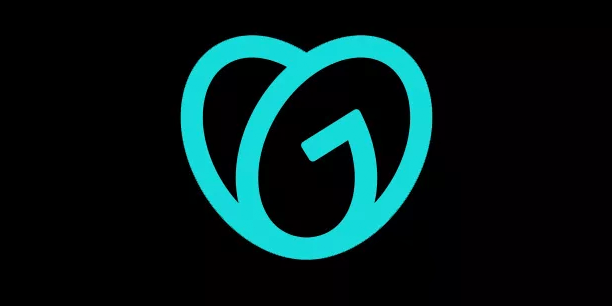YouTube is one of the best places to grow your brand, connect with customers, and share your expertise. But with roughly 500 hours of new videos uploaded every minute, knowing how to optimize YouTube videos is key to standing out.
About 63% of YouTube views come from mobile devices, so your content needs to be easy to find, watch, and enjoy on any screen. In this guide, you’ll learn how to edit YouTube videos, optimize your descriptions for SEO, and apply smart mobile viewing tips to keep your audience engaged.
Why YouTube optimization matters more than ever
Think about the last time you wanted to learn something fast — maybe how to fix a leaky faucet or design a logo. Chances are, you went to YouTube before you even opened Google. That’s because YouTube has become the world’s second-largest search engine, home to billions of daily searches and endless opportunities for discovery.
All this competition means you can’t just hit publish and hope for the best. Optimizing your videos helps your content show up in searches, keep viewers watching, and build real traction for your brand over time.
The foundation: YouTube keyword research that actually works
Before editing a single video clip or writing a description, you need to know what people are searching for. Smart keyword research helps your videos get discovered, attract the right viewers, and build momentum over time.
Start where your audience starts
Use YouTube’s search bar and pay attention to the autocomplete suggestions that appear. These predictions are based on real searches.

For example, if you’re creating content about photography, typing “photography tips for” might reveal suggestions like:
- photography tips for beginners with phone
- photography tips for Instagram
- photography tips for real estate
You can also use tools like Google Trends to spot rising video topics, or Answer the Public and AlsoAsked to find question-based keyword ideas. These tools show how your audience phrases their searches so you can align your content with real viewer interests.
Spy on your competition and their YouTube channel (ethically)
Your competitors can teach you a lot about what works and what doesn’t. Studying their channels helps you identify content gaps and find opportunities to create something better. Tools like TubeBuddy and vidIQ reveal the tags and keywords other creators use.
Avoid copying their strategy and instead use the insights to strengthen your own. If a competitor has a strong video on “photography tips for beginners” but nothing about “photography tips for real estate agents,” that’s your opening to create fresh, relevant content.
Keyword research works a lot like building customer loyalty. It’s about understanding what people care about most and consistently showing up with content that meets their needs.
Craft video titles that get clicks (without being clickbait)
A strong title can make the difference between a video that gets skipped and one that earns a click. Viewers make split-second decisions based on what they see in search results, so your title has to grab attention, communicate value, and stay true to your content.
The front-loading strategy
The first few words of your YouTube video’s title matter the most. Place your most important keyword within the first 30 characters of your title. This helps both YouTube’s algorithm and your audience understand what your video is about right away. It’s especially important for mobile viewers who only see part of your title in search results.
For example, instead of:
My Journey to Becoming a Better Photographer - Tips for Beginners
Try: Photography Tips for Beginners: 10 Techniques That Transformed My Photos
This approach makes your video easier to find and click on while staying true to the content. To find the best keywords for your titles, check out this blog on performing SEO keyword research to drive traffic.
You can also experiment with emojis or special characters to make your title stand out in search results. A single emoji that fits your topic—like a 🎥 or 📸—can catch the eye without feeling gimmicky.
The psychology of clickable titles
Great video titles create curiosity while delivering on their promise. They make the viewer feel like clicking will be worth their time. Some of the most effective YouTube title types include:
- Numbers: “7 Ways to Improve Your Lighting Setup”
- Time frames: “Learn to Edit Like a Pro in 30 Days”
- Emotional triggers: “Mistakes You’re Making in Portrait Photography”
- Clear benefits: “Double Your Subscribers with These Editing Hacks”
A well-written title works a lot like a tagline by showing your audience exactly what you stand for.
Write optimized descriptions for your YouTube videos
Video descriptions are often the most overlooked part of YouTube SEO, but they play a huge role in how your content performs. A well-written description helps YouTube understand what your video is about, gives viewers more context, and encourages them to take action. The two keys are placement and structure: what you say first and how you organize the rest.
Related: Beginner’s guide to SEO
The first 125 characters are gold
Think of your first sentence as the “headline” of your description. The first 125 characters are what viewers see before clicking “Show More,” and they carry the most weight for SEO. Place your primary keyword at the start of this sentence to make it clear to both your audience and search engines what your video covers.
For example, if your keyword is how to optimize YouTube videos for SEO, your opening could read: Learn how to optimize YouTube videos for SEO using simple techniques that improve ranking, engagement, and visibility.
You can include extra context or links below the fold, but keep your opening concise and relevant. If you use affiliate links, always add a short disclosure for transparency. At the end of your description, add a few relevant hashtags to help your video appear in related searches.
An optimized description structure: our free template
A strong description makes your video easy to watch, easy to navigate, and easy to share. Structure it so viewers know exactly what to expect and how to find what they need. It should include:
- A compelling summary (2–3 sentences)
- Timestamps for easy navigation
- Key points or takeaways
- Relevant links (your website, related videos, resources mentioned)
- A clear call to action
Here’s a template that works:
In this video, you’ll learn [main benefit/topic]. I’ll show you [specific technique/strategy] that helped me [concrete result].
TIMESTAMPS:
00:00 Introduction
01:30 [First main point]
03:45 [Second main point]
[etc.]
KEY TAKEAWAYS:
✓ [Benefit 1]
✓ [Benefit 2]
✓ [Benefit 3]
MENTIONED IN THIS VIDEO:
- [Topic 1]
- [Topic 2]
CONNECT WITH ME:
Website: [link]
Instagram: [link]
Newsletter: [link]
Don’t forget to subscribe and hit the bell icon for more [your niche] tips.
Writing optimized YouTube descriptions follows similar logic to crafting strong product copy. For more inspiration, explore how to write effective AI product descriptions.
The art and science of YouTube tags
Tags might not hold as much weight as they used to, but they still help YouTube understand the context of your video. When used correctly, tags can reinforce your main keywords and connect your content to similar topics that viewers are already searching for. However, they need to be used strategically.
The tag hierarchy
Think of your tags as a pyramid. At the top is your main keyword — the primary term your video focuses on, like how to optimize YouTube videos for SEO. Beneath that, include a few broad topic tags that describe the general theme, such as YouTube SEO, content strategy, or video marketing tips. Finally, finish with a few specific, long-tail tags that highlight the details of your content, like optimize YouTube video description for SEO or YouTube mobile optimization tips.
Here’s what that might look like in practice:
- how to optimize YouTube videos for SEO (main keyword)
- YouTube SEO
- content marketing
- YouTube analytics
- how to optimize YouTube video description for SEO
Avoid tag stuffing. Adding too many unrelated or repetitive tags can confuse YouTube’s algorithm and weaken your ranking signals. Focus on relevance and accuracy instead.
Thumbnails: how to create a visual hook
Your thumbnail is the first impression your video makes. It’s your billboard in a crowded search result, and it can determine whether someone clicks or scrolls past. It should capture attention, communicate your message instantly, and stay consistent with your brand.
Before you start designing, keep the tech specs in mind. YouTube recommends:
- Resolution: 1280 x 720 pixels (minimum width 640 pixels)
- Aspect ratio: 16:9
- File type: JPG, GIF, or PNG
- Size limit: Under 2 MB
These specs ensure your thumbnail looks sharp on any device, from desktop to mobile.
The psychology of irresistible thumbnails
YouTube video thumbnails that perform well tap into human psychology. They make viewers curious, create emotional connections, and stand out visually. Use these guidelines to design thumbnails that attract clicks and build recognition for your channel:
- High contrast: Makes your thumbnail pop in a sea of videos
- Faces with emotion: Humans are naturally drawn to expressive faces
- Minimal text: Keep it to 3–5 words, large enough to read on mobile
- Consistent branding: Helps viewers recognize your content instantly
- Curiosity gap: Show just enough to intrigue, but not enough to satisfy
Your thumbnail should feel like part of your brand identity, not an afterthought. Using consistent colors, fonts, and styles reinforces trust and helps viewers instantly associate your videos with your brand. If you’re still refining your visual identity, learn more about how to choose and implement brand colors.
The hidden YouTube SEO goldmine: captions and subtitles
YouTube video captions and subtitles improve accessibility, boost engagement, and quietly support SEO. When you include accurate captions, you’re not only helping hearing-impaired viewers but also giving YouTube more text to index, which can help your video appear in more searches.
Beyond auto-captions
YouTube automatically generates captions for most videos, but they’re rarely perfect. Misspellings, awkward phrasing, and timing errors can easily slip in, which creates a poor experience for viewers and weakens your SEO signals. Take the time to review and edit your captions before publishing to make sure they accurately reflect your content.
Once your captions are correct, you can translate them into other languages to reach a wider audience. This can help your videos show up in international search results and connect your brand with viewers around the world.
Maximizing engagement with cards and end screens
Cards and end screens are small but powerful tools for keeping viewers engaged long after they click play. Used strategically, they can guide people to your next video, encourage subscriptions, and strengthen your channel’s overall performance.
Strategic card placement
Cards work best when they feel natural rather than distracting. You can add up to five, but it's recommended to limit yourself to two or three cards per video to keep things focused. Place them just before typical audience drop-off points, which are when viewers have gotten the main value from your content and are ready to explore something else.
For instance, if your analytics show that viewers begin leaving around the four-minute mark, add a card around 3:45 that links to a related tutorial or playlist. This helps keep viewers on your channel instead of clicking away.
Cards can highlight related videos, products, or playlists, but they should always make sense for the viewer. Each card is an opportunity to turn a viewer into a subscriber or direct them toward content that deepens their interest in your brand.
End screen best practices
End screens are your final chance to keep viewers connected. Use them to promote your newest upload, link to a playlist, or encourage subscriptions. Include a simple verbal call to action near the end of your video, such as “If you found this helpful, subscribe for more content like this.” A clear and friendly reminder can make a big difference.
Keep your end screen simple with no more than two clickable elements. Each one should support a goal, such as growing subscribers, increasing watch time, or sending traffic to your website. When your end screen is clean and intentional, viewers know exactly what to do next.
The power of playlists
YouTube playlists are one of the simplest ways to keep viewers on your channel longer. They help organize your content, improve watch time, and make it easier for new visitors to explore your videos. A well-structured playlist also signals to YouTube that your content is related, which can boost visibility across your channel.
Strategic playlist creation
Think of playlists as mini content hubs. Group your videos by theme, series, or audience intent so viewers can easily find what interests them most. For example, a channel about digital marketing might have separate playlists for SEO tips, social media strategies, and video marketing tutorials.
Arrange the videos in a logical order that naturally encourages binge-watching. Start with broader, introductory topics, then move into more advanced or specific content. This keeps your audience learning and engaged while helping YouTube’s algorithm understand how your videos connect.
Don’t forget to write clear titles and descriptions for your playlists. Treat them like search opportunities by including relevant keywords that match what your audience is looking for. The easier it is to navigate your playlists, the longer viewers will stick around.
Don’t forget to optimize your YouTube channel as a whole
Your channel is your brand’s home base on YouTube, and optimizing it helps new viewers understand who you are and why they should subscribe. A cohesive, professional-looking channel builds trust, encourages engagement, and makes your content stand out.
Channel optimization checklist
Before uploading your next video, take a few minutes to review your overall channel setup.
- Update your channel art and icon so they match your brand’s colors, fonts, and tone across every platform.
- Write a clear channel description that explains what viewers can expect from your content.
- Add a short channel trailer that introduces new visitors to your brand and encourages them to subscribe.
- Organize your videos into playlists that make your content easier to explore.
- Keep your contact information and links up to date so it’s easy for viewers to reach you or visit your site.
Related: 7 steps for planning a website
Visual identity
Consistency builds recognition. Your profile photo, banner image, and color palette should feel cohesive across your channel, website, and social media accounts. This makes your brand instantly recognizable, no matter where your audience finds you. To learn more about how color influences perception, explore this guide to logo color psychology.
Channel description
Your channel description is an elevator pitch. Use it to explain who your content is for, what value you provide, and how often you post. Include a few relevant keywords naturally so your channel can appear in YouTube search results.
Keep your tone friendly and authentic. The goal is to make visitors feel confident that they’ve found the right place to learn, laugh, or be inspired.
How to amplify your video reach
Publishing your video is only the beginning. The real magic happens when you share it across multiple platforms. Promoting your content helps YouTube recognize it as valuable and increases the chances that it will be recommended to more viewers.
The 24-hour launch window
The first 24 hours after you publish are critical. YouTube uses early engagement signals like clicks, watch time, and comments to decide how widely to promote your video. To make the most of this window, focus on building momentum right away.
- Email your subscriber list with a short, personal note explaining why they’ll love this video. For more advice, explore these email marketing tips.
- Share on social media with messaging tailored to each platform. Avoid posting just the link; add a caption that explains what viewers will gain from watching.
- Engage in relevant communities where your target audience spends time, such as Facebook Groups, Reddit threads, or niche forums. Participate authentically and share your video when it adds value to the conversation.
- Collaborate with others in your niche for cross-promotion. Partnering with another creator or brand exposes your content to new audiences and builds credibility.
- Embed your video on your website within relevant blog posts or landing pages to give it extra visibility and drive traffic between platforms.
The community-building approach
Growing a YouTube channel requires building a loyal community that connects with your content and keeps coming back for more. When you create space for conversation, feedback, and shared experiences, your viewers become loyal supporters who help your channel grow naturally. Here are a few ways to build connections beyond your uploads:
- Use the Community tab to post polls, updates, and teasers for upcoming videos. It’s an easy way to stay active between uploads and keep your audience engaged.
- Host live Q&As or video premieres to interact in real time. Viewers love seeing creators respond directly to questions or comments during a live event.
- Create a community hashtag that your viewers can use on social media. It helps fans share their experiences and lets you track engagement across platforms.
- Invite viewers to join your community spaces like a Discord server, Facebook Group, or newsletter. These places give your audience a closer look at your brand and encourage a deeper connection.
As your community grows, it’s important to stay engaged and responsive. Not every comment will be positive, and that’s part of building a presence online. Learn how to navigate tough feedback with this article on how to handle negative social media comments, and find more engagement ideas in this blog on how to do social media.
Measuring success and iterating to improve your videos
YouTube Analytics gives you valuable insight into how your audience interacts with your videos so you can make smarter decisions with every upload.
Key metrics that matter
Tracking the right metrics helps you understand what’s working and where there’s room to improve. Use this table as a quick reference for what to watch and how to respond.
| Metric | What it really tells you | Action to take |
|---|---|---|
| Click-through Rate (CTR) | How compelling your title/thumbnail combo is | Test different thumbnail styles and titles |
| Average view duration | How engaging your content actually is | Analyze drop-off points and adjust pacing |
| Impressions | How often YouTube shows your video | Indicates trust; low impressions mean optimization is needed |
| Engagement rate | How much your content resonates | Higher engagement = more promotion from YouTube |
| Traffic sources | Where your views come from | Double down on what's working |
The testing mindset
Think of every video as an experiment. Consistent testing helps you understand your audience better and improve future performance. Try testing different:
- Title structures to see what grabs attention
- Thumbnail styles to find the right visual balance
- Video lengths to match viewer preferences
- Publishing times to reach your audience when they’re most active
- Content formats to discover which styles drive the most engagement
Regularly review your analytics to spot trends, refine your strategy, and apply what you learn to your next video. Treat it as an ongoing process of growth rather than a one-time adjustment.
Improving your videos over time is part of building a brand that connects. To learn more about creating content that resonates with your audience, explore the art of brand storytelling.
Staying ahead: YouTube trends for 2025 and beyond
The way people watch and interact with video content is changing fast. To stay competitive, creators and businesses need to keep an eye on the trends shaping YouTube’s future. From short-form video to AI tools, these updates can help you reach new audiences and build a stronger brand presence across platforms.
Here are the key YouTube trends to watch in 2025 and beyond:
- YouTube Shorts: Short-form content remains one of the biggest drivers of discovery. Use Shorts to share quick tutorials, product highlights, or teasers that attract new viewers and direct them to your full-length videos.
- Community Tab: The Community Tab is expanding its role as a space for interaction. Post polls, updates, and sneak peeks to keep your audience engaged between uploads.
- AI Integration: Artificial intelligence is reshaping video creation. Use AI-powered tools for captioning, thumbnail design, and analytics to save time while improving quality and consistency.
- Interactive and Shoppable Videos: Viewers can now click directly on products, tutorials, or calls to action within videos. This feature is ideal for creators and businesses looking to turn engagement into conversions.
- Cross-Platform Strategies: Successful creators are sharing and adapting content across multiple platforms. Repurpose your videos into Instagram Reels and TikToks to reach wider audiences and drive traffic back to your YouTube channel. For help getting started, read these guides to Instagram Reels and posting on TikTok.
YouTube’s future will favor creators who experiment, connect with their audience, and use new tools to work smarter. Stay curious, keep testing, and never stop adapting.
Your YouTube optimization action plan
Optimization isn’t a one-time task; it’s a habit that turns good videos into great ones and helps your channel grow over time. Ready to put everything you’ve learned into action? Follow this simple step-by-step plan:
- Week 1: Audit your existing content. Pick your top five videos and optimize their titles, descriptions, and tags using the strategies from this guide. Focus on clear keywords, engaging titles, and accurate metadata.
- Week 2: Refresh your visuals. Create new thumbnails for your top ten videos and A/B test different styles to see which ones drive higher click-through rates.
- Week 3: Improve accessibility and organization. Add accurate captions to all videos and group your content into topic-based playlists that make it easy for viewers to explore.
- Week 4: Polish your channel presence. Optimize your channel page with updated branding, a strong description, and a short, engaging trailer that introduces new visitors to your content.
Apply these optimization strategies to every new video you publish. Track your analytics, test new ideas, and continue refining what works. Building a consistent process is the key to long-term success on YouTube. For more advice on creating videos that connect and convert, check out these video content tips.
YouTube is a long-term game
Growing a successful YouTube channel doesn’t happen overnight. Even with every optimization in place, results take time. You need to be patient, consistent, and willing to experiment. Every upload teaches you something new about your audience and your content. Some videos might perform well right away, while others will take weeks or months to gain traction; that’s normal.
The algorithm rewards creators who keep showing up, testing ideas, and improving with each video.
Focus on steady progress rather than instant success. Track your analytics, learn from your results, and stay flexible enough to adapt your strategy as trends and viewer preferences evolve. When you approach YouTube as a long-term investment, every view, comment, and subscriber becomes part of your growth story.
Start your YouTube journey today
Optimizing your YouTube videos is an ongoing process, but every improvement brings you closer to stronger engagement, better visibility, and a growing community. The more you experiment and refine your approach, the more confident you’ll become in creating content that truly connects.
Now it’s time to take what you’ve learned and start creating videos that shine. The GoDaddy Video Editor makes it easy to design professional-looking videos, customize them for different platforms, and stay consistent with your brand. Start creating, keep testing, and watch your YouTube channel grow one video at a time.







